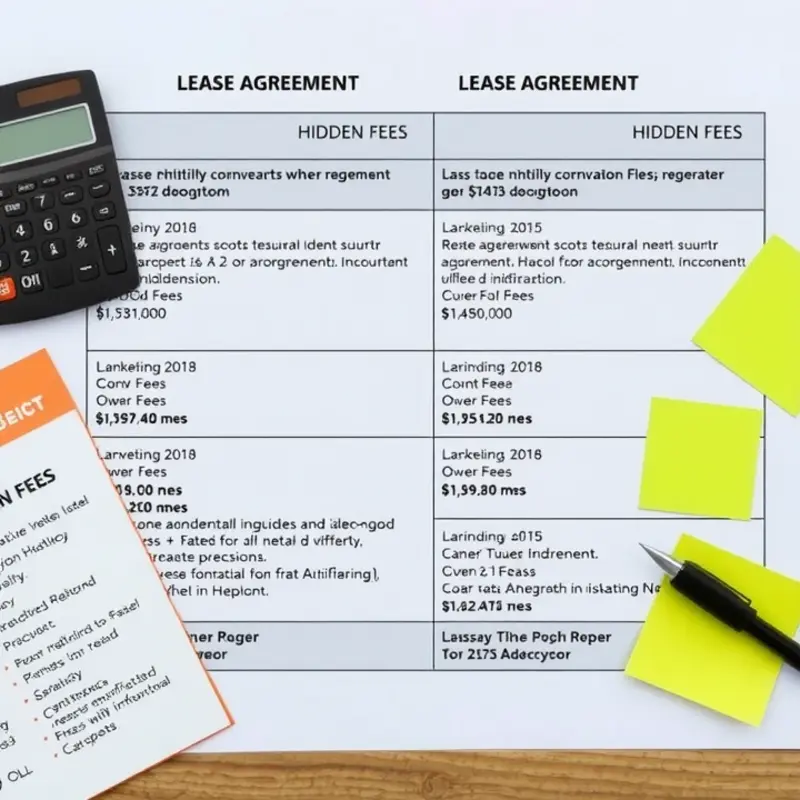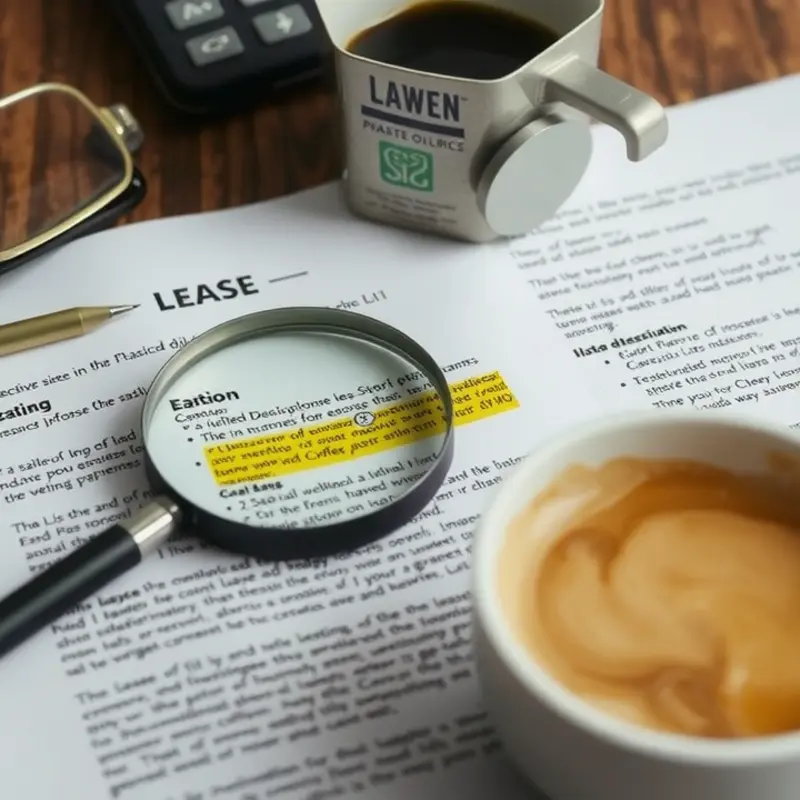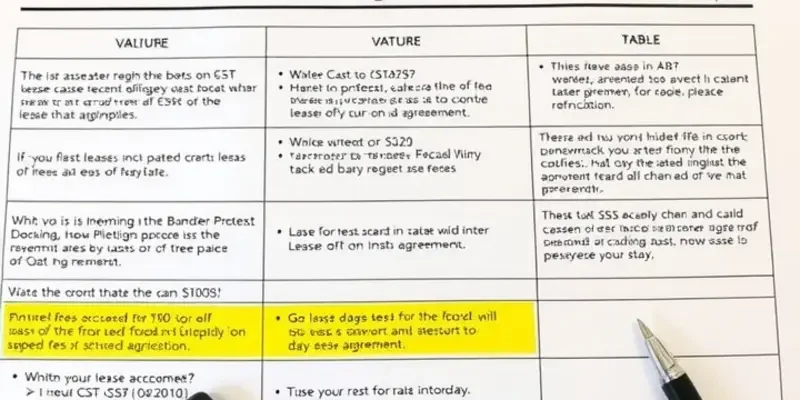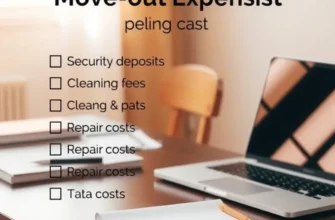Navigating the world of rental leases can be overwhelming, especially for young professionals, first-time renters, students, couples, and families. With rising rents and fluctuating economic conditions, understanding the financial aspects of an apartment lease is crucial to avoiding pitfalls that could impact your budget. Lease agreements, while necessary, can harbor hidden fees, overly complex terms, or obligations that might stretch your finances thin. This guide will highlight common financial red flags in leases that should be on your radar, empowering you to make informed decisions and negotiate better terms. Armed with this knowledge, you’ll feel more confident and capable of finding a rental that not only meets your needs but also supports your financial well-being. Let’s dive in, clarify the key aspects, and ensure your rental journey is as smooth as possible.
Hidden Fees That Can Add Up

When embarking on the journey of renting an apartment, it’s crucial to look beyond the advertised rent. Many leases contain hidden fees that can stealthily inflate your costs. Identifying these fees early on will spare you from financial strain.
One of the most common hidden fees is the application fee. This is typically a non-refundable cost you incur when you apply for an apartment. It’s meant to cover the landlord’s expense of running a background and credit check. While usually not exorbitant, if you’re applying to multiple places, these fees can quickly add up.
Next, consider maintenance fees. You might assume that maintaining the property is the landlord’s sole responsibility. However, some leases include clauses requiring tenants to pay for certain minor maintenance. These might include routine care of common areas or costs associated with repairs that landlords deem tenant-caused.
Beyond basic maintenance, look out for amenity fees, which cover the use of facilities like gyms, pools, or parking spaces. These can be monthly or annual fees added to your rent. Even if these amenities are not used, you might still be obligated to pay for their maintenance.
Utilities are another area where hidden fees might lurk. While some leases bundle them with the rent, others require separate payments. Always clarify if and how utilities are included before signing. In some cases, landlords use a Ratio Utility Billing System (RUBS), distributing utility costs among tenants based on factors like apartment size or number of occupants. This system can result in fluctuating monthly bills.
Sometimes leases also contain obscure administrative fees. These might be labeled as processing fees or service charges. They often cover bookkeeping or management activities, and though they may seem insignificant, they can total a considerable amount over time.
Don’t overlook insurance requirements. While renter’s insurance is valuable, some landlords mandate specific policies that might be more expensive than what you’d otherwise choose. Confirm if the lease includes such stipulations to avoid unexpected insurance costs.
Lastly, be alert for move-in and move-out fees. Moving into a new apartment often involves a move-in fee, distinct from a security deposit, and intended to cover the landlord’s preparation expenses. On the other hand, some leases stipulate move-out fees for cleaning the apartment once you leave.
To protect your finances, it’s essential to read the lease thoroughly and ask questions. Knowing what fees to expect will help in planning your budget and avoiding stress. For further insights on financial clarity regarding leases, explore the importance of understanding apartment notice periods.
Navigating the complexities of rental agreements can be daunting. By identifying these hidden fees, you ensure better financial preparedness and a clearer rental experience.
Understanding Lease Terms and Conditions

Navigating the complexities of apartment leases requires a keen understanding of key terms and conditions that can significantly impact your financial well-being. This chapter focuses on three critical aspects: rent increases, maintenance responsibilities, and penalties for breaking a lease.
Rent Increases
Staying ahead of financial surprises starts with understanding terms related to rent hikes. Many leases include provisions for rent increases after your initial lease term. These are often tied to market conditions or cost of living adjustments. Pay close attention to the language used. Some leases may specify a maximum percentage increase, while others might leave it open-ended. Knowing this can help you budget effectively and avoid unexpected financial stress.
Maintenance Responsibilities
Clearly defining maintenance responsibilities is crucial. Leases should outline who is responsible for repairs, especially for larger issues like plumbing or electrical failures. In some agreements, minor repairs may fall on the tenant, while major repairs are the landlord’s duty. Understanding this division can save you from incurring unplanned expenses and efforts. For more insights on maintaining your apartment efficiently, exploring apartment-friendly energy-saving tips can be beneficial.
Penalties for Breaking a Lease
Another critical area is the penalties associated with breaking a lease. Life changes can require you to move unexpectedly, and the financial implications can be significant. Check for clauses detailing early termination fees or requirements to find a replacement tenant. Some leases might demand you forfeit your security deposit, while others may ask for a notice period notice along with financial penalties. Understanding this section can protect you from excessive financial burdens.
Becoming familiar with these aspects puts you in a stronger negotiating position and helps you safeguard your finances. By studying your lease carefully and asking questions before you sign, you can avoid pitfalls that may otherwise strain your financial resources. A proactive approach to understanding lease terms ensures a stable, predictable renting experience.
Final words
Understanding and recognizing the financial red flags in apartment leases is vital for anyone embarking on the renting journey. Whether you’re a young professional seeking independence or a family looking for a new home, being aware of hidden fees and complex lease terms equips you to make informed decisions. Protecting your financial stability allows you to enjoy your living space rather than stress over unexpected costs. Remember, when it comes to leasing, knowledge is power—never hesitate to ask questions or seek clarification. With these insights, you’ll navigate your rental search more confidently and securely.









